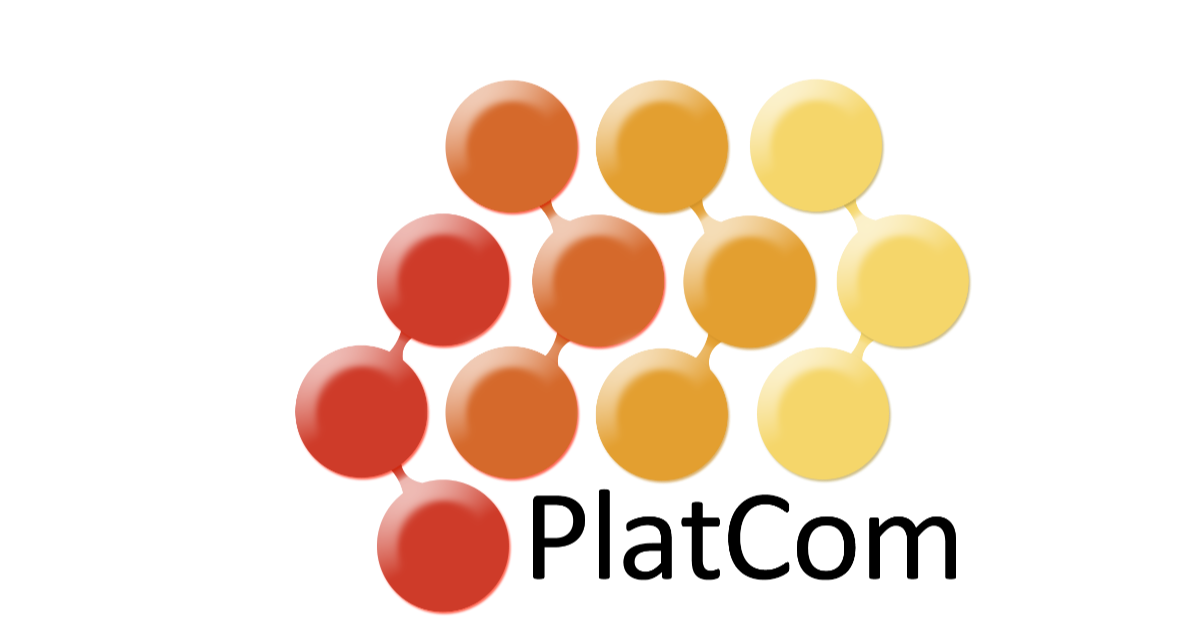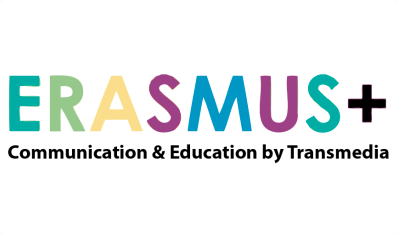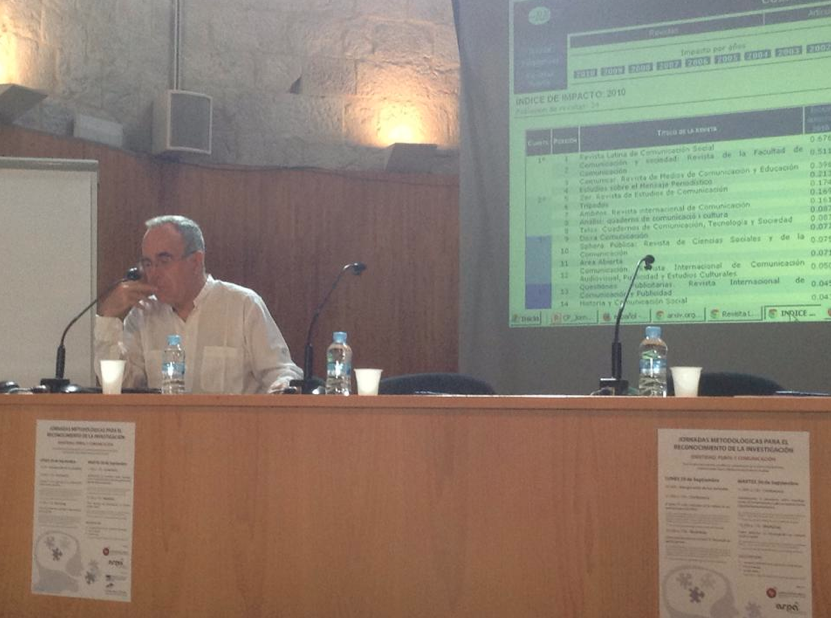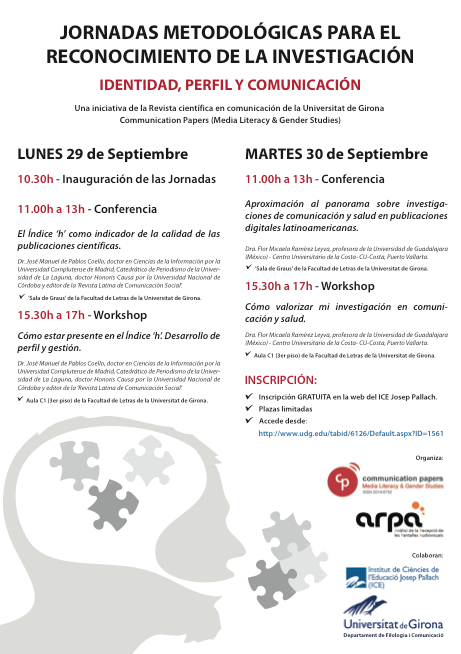Communication Papers
La representación de los políticos en revistas femeninas de alta gama: un estudio de caso
La representación de los políticos en revistas femeninas de alta gama: un estudio de caso
The political representation in high-end women magazines: a case study
Salomé Berrocal Gonzalo
Raquel Quevedo Redondo
Resumen:
La creciente espectacularización que ha experimentado la política en la evolución de su relación con medios y ciudadanos se ha convertido en una de las principales fuentes de contenido para los mass media que persiguen ofrecer al público productos informativos mezclados con entretenimiento.
Sobre esta preponderante tendencia conocida como “infotainment”, el grueso de investigaciones publicadas aparece ligado al avance de la televisión, lo que ha generado una falsa impresión de vacío sobre la existencia de “noticias blandas” protagonizadas por políticos (y más concretamente por políticas), en medios impresos.
Ante la falta de antecedentes científicos que expliquen la presencia del fenómeno más allá del mercado televisivo, este estudio analiza la representación de los líderes y lideresas en las revistas femeninas de alta gama (RFAG) ‘Glamour’, ‘Telva’, ‘Woman’, ‘Elle’ y ‘Vogue’, a través de las entrevistas publicadas en el año 2011 con motivo de las elecciones a Cortes Generales en España.
Desde una perspectiva comparativa y de género, el objetivo del análisis radica en evidenciar la proliferación de un particular formato: el de la “soft interview” o “entrevista blanda”, integrado por cuestionarios que alternan las preguntas personales con preguntas profesionales, con un mayor protagonismo de las primeras cuando el entrevistado es mujer.
Palabras Clave:
Infoentretenimiento; revistas femeninas; comunicación política; framing
Abstract:
The increasing speculation that the policy has experienced in the evolution of its relationship with media and citizens has become a major source of content for mass media that intends to provide informative products blended with entertainment.
About this dominant trend known as «infotainment», most research is linked to the advancement of television, which has generated a false feeling of emptiness on the existence of “soft news” about politicians (and specifically about women politicians), in printed media.
Given the lack of scientific background to explain the presence of the phenomenon beyond the television market, this study analyzes the representation of male and female leaders in highend women’s magazines (RFAG) ‘Glamour’, ‘Telva’, ‘Woman’ , ‘Elle’ and ‘Vogue’, through interviews published in 2011 on the occasion of the elections to the Spanish Parliament.
From a comparative and gender perspective, the objective of this analysis seeks to highlight the proliferation of a particular format: the “soft interview”, composed of personal questions alternated with professional questions, with a greater role of the first option when the gender of the interviewee is female.
Keywords:
Infotainment; women magazines; political communication; framing
Cómo citar:
Berrocal-Gonzalo, S. & Quevedo-Redondo, R. (2014) La representación de los políticos en revistas femeninas de alta gama: un estudio de caso, en Communication Papers, 3, 5, 61-73.
Recuperado de:
Italian female ministers: a test for the celebrity politics?
Italian female ministers: a test for the celebrity politics?
Donatella Campus
Elena Giammaria
Abstract:
The so-called celebrity politics is a well-known general and global phenomenon, common to most Western democracies. The celebrity politicians have become leading actors in tabloids, gossip magazines and entertainment TV programs. The paper aims at investigating the impact of those developments on women politicians and attempts at evaluating if they advantaged or disadvantaged by the increasing celebritization of politics. By referring to the case of the Italian female ministers and through a content analysis of the most read Italian gossip magazine, the paper tests the hypotheses that female ministers receive more coverage than their male colleagues and that this coverage gives more space to trivial details, like appearance and attire. The paper argues that the celebrity politics may give women more visibility, but offers also some occasions for activating the most common and unfair gender stereotypes. Therefore, in the case of male politicians, the coverage of gossip magazines can simply “humanize” their image by showing them in more private settings and allowing them to express their feelings and emotions. In the case of women, the same kind of coverage could reinforce an already biased treatment due to the fact that they usually receive more media coverage mentioning family life, dress and appearance than male politicians.
Keywords:
female politicians; gender stereotypes; celebrity politics; gossip magazines; Italian politics.
Cómo citar:
Campus, D. & Giammaria, E. (2014) Italian female ministers: a test for the celebrity politics?, en Communication Papers, 3, 5, 49-60.
Recuperado de:
http://ojs.udg.edu/index.php/CommunicationPapers/article/view/162/DonatellaCampus_ElenaGIAMMARIA
Women municipal politicians in election news
Women municipal politicians in election news
Angelia Wagner
Abstract:
The news media’s fascination with which party is ahead in the polls — otherwise known as the horse race — has raised questions about how well informed voters are about their choices on the ballot box. A preoccupation with campaign strategies, gaffes, and photo-ops leaves journalists with less time to report on issues and platforms. Some scholars argue women are particularly handicapped by horse-race coverage because it can lead to negative evaluations of their electoral viability and because the masculine language used in this type of coverage could depict them as inappropriately aggressive and therefore transgressing traditional gender norms. But this study on newspaper coverage of municipal elections in one Canadian province reveals that journalists treat regular council contests more as a marathon than a horse race. The nature of municipal election coverage suggests journalists treat candidates as a mass group of runners, doing little to distinguish them from each other and rarely speculating on their electoral chances. The real problem for women and men council candidates is not media bias but media invisibility—getting the coverage they need to build a public profile so voters will support them.
Keywords:
Women politicians; horse-race journalism; municipal politics; Canada
Cómo citar:
Wagner, A. (2014) Women municipal politicians in election news, en Communication Papers, 3, 5, 35-48.
Recuperado de:
http://ojs.udg.edu/index.php/CommunicationPapers/article/view/160/AngeliaWagner
Autopercepciones de las inmigradas sobre su hetero-representación en prensa escrita. Caso gallego y catalán
Autopercepciones de las inmigradas sobre su hetero-representación en prensa escrita. Caso gallego y catalán
Migrant women self-perceptions about her journalistic hetero-representation. Galician and Catalan case
Yolanda Martinez Suarez
Saleta De Salvador Agra
Resumen:
Este texto constituye una aproximación a la inmigración femenina desde los estudios de recepción, es decir, nos centramos en cómo los medios hetero-representan a este colectivo doblemente marcado. La perspectiva es la de los discursos generados en torno a la heterodesignación a la que las inmigradas están sometidas por la prensa escrita generalista, desde sus propios discursos. Analizar las opiniones de las protagonistas de la migración en la prensa española es el objetivo que guía este texto, que busca recoger las interpretaciones de este fenómeno a partir de las propias voces de las migradas. La metodología consiste en la realización de 225 encuestas a una muestra de mujeres migrantes residentes en las comunidades de Galicia y Cataluña. El fin de la elección geográfica es establecer una comparativa entre dos polos opuestos, en cuanto a tradición migratoria se refiere, para poder extraer los puntos en común de la percepción de las protagonista sobre el imaginario mediático que las tiene por objeto. Los principales resultados apuntan a una conciencia respecto a una ausencia de canal que transmita sus voces. Así como a un discurso crítico reflexivo respecto de las noticias construidas en torno a su realidad migratoria. Su consumo mediático les permite establecer una crítica pormenorizada a las estrategias mediáticas más usuales: frecuencia temática, representación fotográfica, terminología, etc.
Palabras Clave:
Inmigración, género, autodesignación, representaciones, prensa escrita, recepción.
Abstract:
This text is an approach to female immigration from reception studies. We focus on how the media represents this doubly labeled group. The perspective is about listening her own speeches about how general media show them. Analyze the migration protagonist’s opinions in the Spanish press is the overarching objective of this text, which aims to collect this phenomenon’s interpretations from migrants’ own voices. The methodology consists of conducting 225 surveys to a sample of migrant women who live in Galicia and Catalonia.
The geographical choice try to establish a comparison between two polar opposites in migration tradition, in order to extract the commonalities of perception of the protagonists about the inmigrant imagery of the media. The main results point to an awareness of a lack of channels broadcasting their own voices.
We found that there is a critical reflective discourse on newsbuilt around their reality. Their media consumption allows them to criticize the most common media strategies: the thematic frecuency, the photographic representation, the terminology, etc.
Keywords:
Inmigration, gender, self-presentation, press, reception.
Cómo citar:
Martínez-Suárez, Y. & De Salvador-Agra, S. (2014) Autopercepciones de las inmigradas sobre su hetero-representación en prensa escrita. Caso Gallego y Catalán, en Communication Papers, 3, 5, 24-34.
Recuperado de:
http://ojs.udg.edu/index.php/CommunicationPapers/article/view/158
Visibility and invisibility: exploring the representation of women and men in Irish politics. The example of the 2011 broadcasts.
Visibility and invisibility: exploring the representation of women and men in Irish politics.
The example of the 2011 broadcasts.
María Martínez Lirola
Abstract:
Although the socio-economic situation of Ireland has improved in the last decade, the situation of women continues to be unequal to men and there are certain limitations in their rights. Despite well-known exceptions, women have tended to be underrepresented in Irish politics. However, in the last elections some of them decided to run for the Republic’s presidency as well as to become the first female Irish Prime Minister. In this sense, this research paper will try to contribute to the representation of women in the 2011 campaigns. Both general and presidential referendums will be under analysis. Our sample will consist of the most representative TV broadcasts of the main political parties (i.e. Fianna Feil, Fine Gael, Sinn Fein, among others).
As regards methodology, we will aim for the combination of critical discourse analysis and multimodal critical discourse analysis in order to observe the main visual representation of politicians as social actors (van Leeuwen, 2008), and consider the possible similarities and differences between women and men politicians. The study aims to observe if there are as many women as men politicians in the broadcasts of the 2011 election campaigns in Ireland and to pay attention to the way women and men politicians are portrayed in the broadcasts under analysis. The analysis will show that politicians are portrayed as elite individuals, that there is a general positive representation of the candidates and that women are underrepresented in Irish politics, which points out that it continues being a challenge for democracy the participation of women in politics since their representation or role is not equal compared to men.
Keywords:
Multimodality, broadcasts, critical discourse analysis, Celtic Tiger period.
Resumen:
Aunque la situación socio-económica de Irlanda ha mejorado enla última década, la realidad de las mujeres continúa siendo distinta a la de los hombres y hay ciertas limitaciones en sus derechos. Las mujeres siguen estando infrarrepresentadas en la política irlandesa con algunas excepciones. Sin embargo, en las últimas elecciones, algunas se presentaron como candidatas a la presidencia y también a optar a ser primera ministra. En este sentido, este artículo es una contribución al estudio de la representación de las mujeres en la campaña política del año 2011.
Tanto las elecciones generales como las presidenciales son objeto de análisis. Nuestro corpus consiste en los videos políticos usados por los principales partidos políticos (Fianna Feil, Fine Gael, Sinn Fein, entre otros).
Con respecto a la metodología, se combinará el análisis crítico del discurso y el análisis crítico del discurso multimodal con el fin de observar la representación de los/as políticos/as como actores sociales (van Leeuwen, 2008) y considerar las posibles diferencias entre las mujeres y los hombres políticas/os. El estudio tratará de observar si hay tantas mujeres como hombres en los videos de las elecciones de 2011 en Irlanda y prestará atención al modo que se las representa el los videos objeto de estudio. El análisis mostrará que los/as políticos/as son representados/as como élite, que predomina la representación positiva y que las mujeres aparecen infrarrepresentadas en la política irlandesa, hecho que pone de manifiesto que la participación de las mismas en la política sigue siendo un reto para la democracia debido a que su representación o papel no es igual al de los hombres.
Palabras clave:
Multimodalidad, videos políticos, análisis crítico del discurso, Celtic Tiger.
Cómo citar:
Martínez-Lirola, M. (2014) Visibility and invisibility: Exploring the representation of women and men in Irish politics. The example of the 2011 broadcasts , en Communication Papers, 3, 5, 11-23.
Recuperado de:
http://ojs.udg.edu/index.php/CommunicationPapers/article/view/157/MartinezLirola
El papel de los medios de comunicación para la igualdad de género (Reseña)
El papel de los medios de comunicación para la igualdad de género (Reseña)
Carla Cerqueira
De reinas a ciudadanas: Medios de comunicación, ¿motor o rémora para la igualdad?
Juana GALLEGO
España: Aresta Mujeres, 2013.
309 páginas
ISBN: 978-84-941456-1-2
Resumen:
El libro “De reinas a ciudadanas: Medios de comunicación, ¿motor o rémora para la igualdad?” se dirige a un público que se interesa por las temáticas de los medios de comunicación, igualdad de género y ciudadanía. A lo largo de sus 10 capítulos, este libro traza el panorama general en las más diversas áreas comunicativas, pasando por el periodismo, la prensa femenina, la televisión, la radio, la publicidad y hasta el cine.
Cómo citar:
Cerqueira, C. (2014) El papel de los medios de comunicación para la igualdad de género, en Communication Papers, 3, 5, 11 – 12.
ISSN: 2014-6752
Recuperado de:
http://ojs.udg.edu/index.php/CommunicationPapers/article/view/152/carla_cerqueira
El Grupo de Investigación ‘ARPA’ consigue un proyecto Erasmus+ (ka2) financiado con más de 170.000€
El Grupo de Investigación ‘ARPA’ consigue un proyecto Erasmus+ (ka2) financiado con más de 170.000€
Las doctoras de la ‘Universitat de Girona’ Carmen Echazarreta Soler y Núria Puig Borrás y, el doctorando Marc Blasco Duatis, participarán como partners del proyecto europeo K2: “Transmedia: a new narrative that involves communication and education towards the future classroom” (2014- 2016)
En la resolución del pasado 24 de Septiembre del ‘Organismo Autónomo de Programas Educativos Europeos’ (OAPEE), el proyecto donde participa el Grupo de Investigación ARPA de la Facultad de Turismo y Comunicación ha sido uno de los 21 proyectos seleccionados en la convocatoria de proyectos europeos K2 en la modalidad “sector educación escolar”.
El proyecto titulado “Transmedia: a new narrative that involves communication and education towards the future classroom”, cuenta con la participación de siete partners europeos, uno de los cuales, el Instituto de Secundaria de Palamós, es el centro coordinador del proyecto.
El proyecto, que ha sido dotado con más de 170.000 €, se desarrollará a lo largo de dos años y consta de varias fases. Concretamente, el Grupo de Investigación ARPA participará coordinando la fase de investigación y difusión del proyecto, además de la edición de las investigaciones científicas resultantes en la revista Communication Papers, editada por el mencionado Grupo de investigación.
Recuperado de:
http://communicationpapers.wordpress.com/2014/10/09/el-grupo-de-investigacion-arpa-consigue-un-proyecto-erasmus-ka2-financiado-con-mas-de-170-000e/
Jornadas metodológicas para el reconocimiento de la investigación
Jornadas metodológicas para el reconocimiento de la investigación
La Universitat de Girona acogió el pasado 29 y 30 de Septiembre las Jornadas Metodológicas para el reconocimiento de la investigación, una iniciativa del ‘Grup de Recerca ARPA’ y de la Revista científica Communication Papers.
El catedrático de la Universidad de la Laguna, José Manuel de Pablos Coello, y la Mtra. Flor Micaela Ramírez Leyva de la Universidad de Guadalajara (México), fueron los ponentes encargados de las conferencias y workshops que se impartieron a lo largo de los dos días.
El ‘Grup de Recerca ARPA’ y Communication Papers agradecemos la tarea de los ponentes en ésta primera edición. Asímismo, constatamos el éxito de las jornadas y emplazamos a la comunidad científica a participar de futuras actividades similares.
Recuperado de:
http://communicationpapers.wordpress.com/2014/10/09/jornadas-metodologicas-para-el-reconocimiento-de-la-investigacion-2/
Communication Papers organiza las “Jornadas Metodológicas para el Reconocimiento de la Investigación – Identidad, Perfil y Comunicación”
Communication Papers organiza las “Jornadas Metodológicas para el Reconocimiento de la Investigación – Identidad, Perfil y Comunicación”
Communication Papers organiza las “JORNADAS METODOLÓGICAS PARA EL RECONOCIMIENTO DE LAS INVESTIGACIÓN – Identidad, Perfil y Comunicación” los próximos 29 y 30 de Septiembre con las Conferencias y Workshops de:
Dr. José Manuel De Pablos Coello
Dra. Flor Micaela Ramírez Leyva
Inscripción GRATUITA aquÍ:
http://www.udg.edu/tabid/6126/Default.aspx?ID=1561
(utilicen Google Chrome para realizar la inscripción)
¡Plazas limitadas!
Communication Papers publica el Call for Papers del Monográfico 2: Women, Media & Politics
Communication Papers publica el Call for Papers del Monográfico 2: Women, Media & Politics
Publicado Call for Papers del Monográfico 2 de CP titulado: “Women, Media & Politics” dirigido por la Dra. Nuria Fernandez Garcia.
Puede hacer sus aportaciones del 12 de Septiembre al 15 de Noviembre de 2014!
Accede a la revista: www.communicationpapers.es
CALL FOR PAPERS
How are women politicians represented in the media? A significant amount of research suggests that the press covers men and women politicians differently. There is a host of evidence suggesting that women politicians are framed in certain ways that differ from their male counterparts, and that those frames often put them at disadvantage. Women receive lower, less prominent and less substantive coverage than do men. Women’s viability as election contenders is often framed more negatively than men’s. News reports on women leaders tend to focus on personal appearance rather than on policy issues. Media refer to women more informally than men. Women are more likely to have their titles (such as Senator or Representative) dropped in news stories, and they are more often referred to by their first names or as ‘Ms.’ or ‘Mrs.’ than are men. Women politicians are also more likely to be described in terms of the personal traits associated with traditional ‘female’ stereotypes. The press discusses “female” issues more frequently when covering women politicians and reports “male” issues more extensively with men politicians. Media tend to use more highly charged language to report the speech of female politicians, and women are directly quoted less often than her male opponents.
Because the media have become the public sphere in which the identity of the politician is constructed, those gender biases can have electoral consequences. Gender differences in media coverage may influence women’s participation in public life, voters’ evaluations of male and female candidates, candidates’ choice of campaign strategies, and people’s view regarding women’s role in the political arena.
Some research also suggests that the increase in the access of women to political office should arguably result in a normalization of the representation of women politicians in the media coverage. If women and men have comparable access to positions of power, if women access the highest offices, should not this mean the disappearance of existing stereotyping gender roles?
TOPICS
- gender diferences in news coverage of male and female politicians,
- media gender bias in political campaigns,
- comparative studies on gender di!erences in political campaigns,
- deconstructing gender stereotypes in political advertisements of women candidates,
- conventional frames employed by the media about women candidates for office,
- the portrayal of women in power (eg. Prime Ministers, Presidents, Cabinets Members, Members of the Parliament),
- original research about the representation of women politicians in social networking sites,
- the role of the media in shaping an ideal of women in politics,
- media discourse about power from a gender perspective,
- representation of femininities in media political texts,
- the relationship between gender, sex and heteronormativity in media political texts,
- audience perception of women leadership ability,
- women politicians representation from a post-feminist perspective,
- intersectional approaches to the study of women politicians representation (how it is affected by other structures such as class, race, ethnicity, or sexual orientation).
STANDARS OF SUBMISSION
Only original and unpublished proposals will be considered. Articles must respect the rules of APA style. Each manuscript should be between 7,000 and 8,500 words in main text and 200 words in abstract. All submissions will be blind-refereed. Complete manuscripts should be ready for peer review by November 15th. Publication is due for December 2014. Submission in the web sites the manuscript by the standard template of the journal. Include one separate little page containing title, author/s, affiliation/s and the address, phone, and email of the lead author. Manuscripts can be written in Catalan, Eusquera, Spanish, English, Portuguese, French and Italian.
Please, submit manuscripts to the Communication Papers web site at:http://www.communicationpapers.es/
You can choose the language of the website (English, Spanish or Catalan) on the left vertical menu, in the “idioma” section.
You can download the standard template for articles in:
http://communicationpapers.files.wordpress.com/2013/10/cp_articulos_maq.doc
TIMELINE
Recordamos a los autores interesados en participar del presente número que la revista Commuication Papers publica los textos en sistema pre-print conforme superan el proceso de revisión, hasta el cierre del número en las fechas indicadas a continuación:
- Start of Call for Papers: July 30th, 2014
- End of Call for Papers: November 15th, 2014
- Date of Publication: December 19th, 2014




